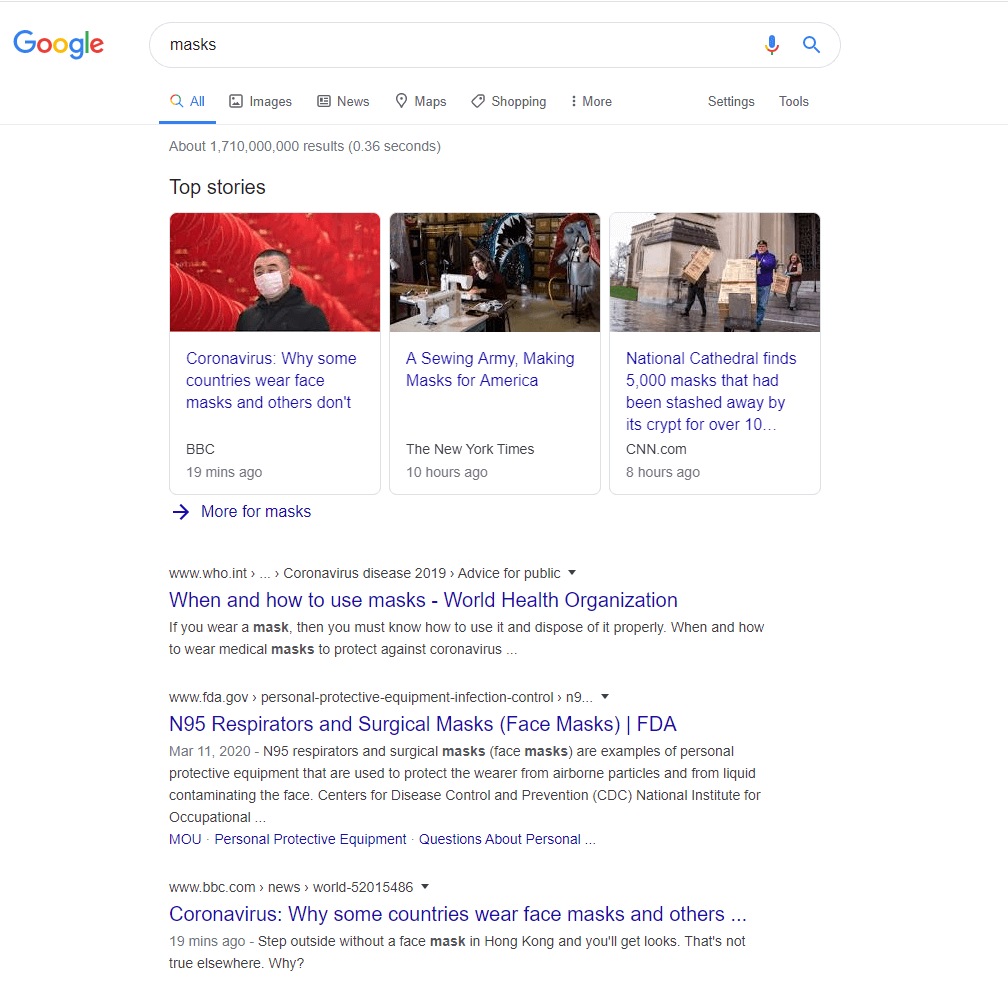Have you heard the phrase “Content is King”? Most people have because good content pulls users into your website for free. SEO is the main factor in how widely viewed content is and how much free (yes, free!), organic search traffic it wins. SEO is fairly complicated, which can make creating SEO-friendly content overwhelming. This blog post will break down the topic and explain how to optimize your content for SEO across industries.

What exactly is SEO?
SEO stands for Search Engine Optimization. And, it does exactly that – It makes content perform better on search engines, such as Google, Bing, and Yandex, to increase both the quality and quantity of website traffic.
Search engines gather and rank all content produced per search query and then run those rankings through algorithms to determine how relevant content is, and therefore, what page of the search engine it appears on. Needless to say, it’s better to be on page 1 than page 20 which is why well-known, authoritative sites typically appear first as you can see in the screenshot below.

Factors ranging from both on-site and off-site SEO impact how your content is ranked within the algorithm. On-site SEO includes factors like keywords and content relevancy, while off-site SEO includes site authority, relevancy and link building.
Keyword Research
Keyword research is the first step in SEO copywriting and is an essential part of any successful SEO strategy. Before writing, decide which terms you want your content to be found for. To make that decision, get inside your target audience’s head and research how they are searching for relevant content. Think about what wording or phrasing they would most likely search and how that relates to your business. Then as you write, use those exact terms in your content.
How To Conduct Keyword Research
First, brainstorm. Put yourself in your audience’s shoes and jot down all terms that could be relevant. For example, if you are writing about how to effectively work from home during the coronavirus outbreak, ask yourself ‘what would people Google to find this information?’.

Also, use Google or YouTube for inspiration since both platforms suggest common searches as you type in their search bars. Another option is to just search ‘Searches Related To…’ and see what pops up. Alternatively, go to SimilarWeb and research which search terms your competitors are using to win traffic. You can also use SimilarWeb’s keyword generator to obtain a list of keywords related to any seed keyword, providing you inspiration, and additional keywords to target.
For example, looking at walmart.com and target.com, Walmart wins a large majority of relevant search traffic (69%) while Target lags behind scooping up only 30%. To better compete and win keyword traffic, Target first needs to understand what keywords Walmart is using to drive traffic.
The most important factors to consider when choosing keywords are search volume, organic click-through-rate (featured snippets), the level of difficulty, and keyword trends.
Keyword Implementation
To help search engines link your keywords to your content and deem it relevant, it would be best to use your main keyword once within the first 100-150 words of your piece as well as in your article headers. Of course, use each keyword multiple times naturally throughout the rest of the text as well.
Remember SEO should not compromise the originality of your idea or the readability of your text. Keyword stuffing is an easy trap to fall into that can kill the quality of your content. Your goal is to mention your target keywords enough times that search engines understand your page is truly relevant, not to use your keywords as many times as possible even when they don’t quite fit.
How to Craft an SEO Optimized Title
To ensure your title helps your SEO ranking, make it enticing and relevant to the rest of the content on your page. Try to use relevant keywords towards the beginning of the title to prove relevancy, and avoid keyword stuffing. Note, your title should have between 50-60 characters – if it’s any longer it will be cut off in the Search Engine Results Page (SERP)). Of course, each page also needs to have a unique title.
Take a look at the two titles below and guess which you think wins more clicks.
[Hopefully you guessed the 1st one!]
What is a Meta Description and Why Is It Important?
Meta description is a crucial piece of content that appears as part of search results. Think of it as an advertisement for your page and an opportunity to write compelling content that drives clicks and generates a nice bump in your click-through-rate.
credit for the image above: digitalpersonality.org
Here are a few easy tips for crafting a strong meta description.
- Write compelling call-to-actions using strong action words such as ‘discover’ or ‘learn’
- Give each page a unique meta description
- Keep to within 155 characters so it doesn’t get cut off by the SERP
- Include your main keywords
The Basics of SEO Headings
The main heading of any piece of content is called H1. Your H1 should include your primary keywords, be closely related to the page title and to the main topic of the page. It’s also okay for your H1 and page title to be the same.
The main subheaders are referred to as H2 and the smallest headers are called H3. Both H2 and H3 headers should include secondary keywords. The mix of long-tail and short-tail keywords from these headers will help search engines understand the structure and content of your page.
Here is an example:
H1: A Coronavirus Outbreak Impact Overview
H2: The Impact of COVID-19 on Businesses
H3: Marketing Strategy Shifts in Retail
Links Matter
Links are often under-appreciated when it comes to SEO, but don’t underestimate their importance. Include internal and external links so your content is perceived as a credible reference and in order to position yourself as an expert on the topic – to both search engines and your audience.
Internal links are links that take readers to other related content within your site. External links should link to reliable, authoritative sources that support your content’s claims. External links build a relationship history between your site and more established sites, so rely on well-known, reputable publications like Forbes, Business Insider, Neil Patel, and more.
All links need a proper UTM and to open in a new tab, so the reader can view the additional resource without leaving your content. As a rule, a short, easy-to-read URL that separates your main keyword with hyphens is ideal.
For example:
Do: https://www.mysite.com/corona-virus
Don’t: https://www.mysite.com/09-2019/?category=7&article=3
Images
Images are content cornerstones that raise curiosity and motivate people to read your piece. That is why it is so important to include relevant, interesting images with alternative text (commonly referred to as simply ‘alt text’). Alt is a text description that is added to an image’s HTML tag on a web page. It is displayed when a user moves his/her mouse over the image and when the image cannot be displayed.

Alt text helps search engines understand what your images show which, again, helps your content rank higher. Your alt texts can be a complete sentence describing the image and should be based around your target keywords as well.
Conclusion
Optimizing your content for SEO can make a huge difference in the amount of traffic and the quality of traffic your site receives for free. Hopefully, following these guidelines helps you to optimize your content and get an edge over your competitors.



